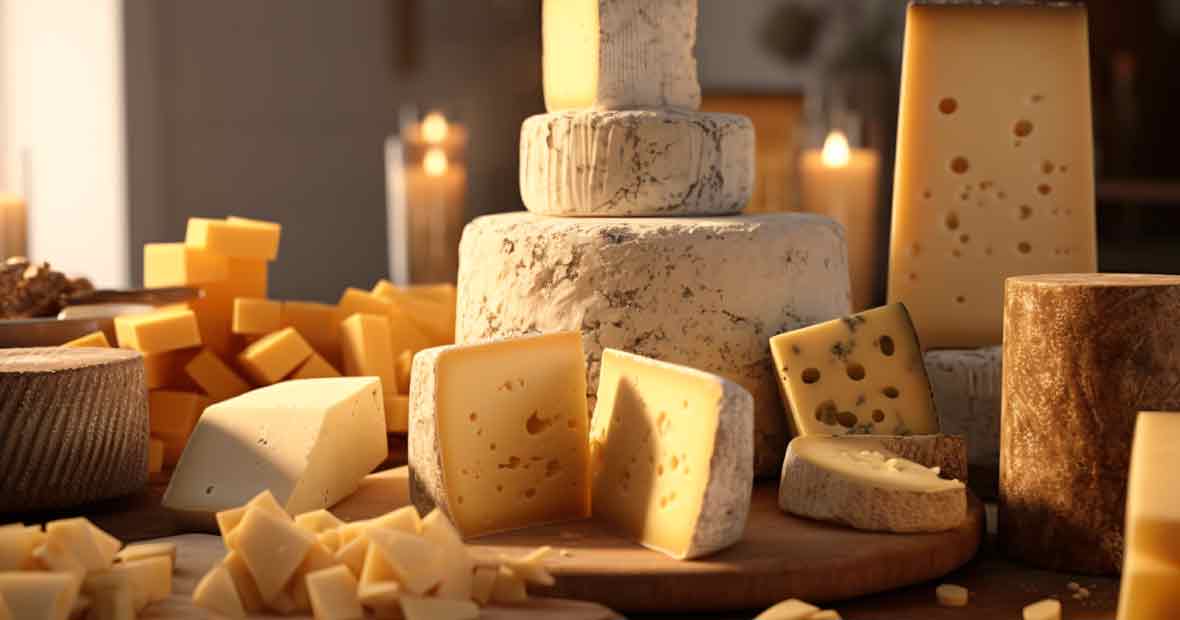
Were you aware that the French cheeseboard boasts a history that can be traced as far back as the 15th century? This is due in large part to the fact that French cheeses are much more than a tasty treat. They represent integral part of the culture of the entire region. France has also become famous for its ability to produce entirely unique flavours such as Camembert, Roquefort, Brie, and Comté. In fact, cheese is still an important source of income for many French districts (known as "arrondissements"). Not only are cheese artisans extremely proud of their work, but presentation is just as important. This is why cheeseboards have come to represent an important portion of their gastronomic culture. However, there is a bit more than meets the eye in terms of how these collections are displayed and presented. Whether you are planning a trip to France or you are simply interested to learn more about French cheeses, the information below should provide an interesting perspective.
General French Dining Etiquette at a Glance
It is first a good idea to review a handful of typical dining rules before moving on to discuss the etiquette specifically associated with cheeseboards. Note that these suggestions tend to be associated with more formal gatherings as opposed to enjoying a night out with friends or family members. For instance, they are more likely to be applied when dining out at a restaurant or when attending a business meal. Perhaps the most straightforward involves the placement of your hands. Both hands are generally visible when dining, even if one remains idle. The hand not in use should be placed on the table so that the wrist rests on the edge. While the exact history of this tradition is unknown, it is thought that both hands remaining visible dates back to mediaeval times when guests were obliged to prove that they did not bring any weapons to the meal. The protocol seems to have survived over the centuries; providing glimpses into a not-so-distant past when personal safety was a very real concern. Of course, other unspoken guidelines should also be followed when enjoying a French meal. Additional examples include dressing appropriately, bringing a gift such as a bottle of wine or a box of chocolates and waiting for the host before beginning your meal (normally following the well-known phrase "bon appétit"). While foreigners are provided with a bit of leeway, it is still wise to keep these suggestions in mind if you hope to make a good impression.
French Cheeseboard Etiquette: A Surprising Number of Intricacies
Anyone who has visited an online cheese shop is well aware that numerous variants can trace their origins to France (well over 400 varieties). So, it only stands to reason that each is handled differently during a meal. One concern involves how the cheeses are cut in terms of shape and thickness. Here are some common recommendations based on the type of cheese:
- Goat cheese should be cut in parallel slices.
- Round cheeses are generally cut into thin triangular sections due to their relative hardness.
- Rectangular cheeses will be cut so that the slices are parallel to the centre.
- Wedge-shaped cheeses are sliced diagonally so that the tip holds a portion of the rind (the part of the cheese with the most intense flavour).
Note that these guidelines are just as important if you happen to be serving the cheese; as some hosts will cut the selection beforehand. However, many prefer allowing their guests to slice their own cheese so that the internal flavours remain intact for as long as possible. While an online cheese shop will often sell standalone portions, the cheeses themselves are rarely served alone. The French do not consider cheese to be an appetiser, but rather as a means to compliment other items. Cheese will often be paired with freshly baked bread (such as a baguette) or a red wine that is meant to enhance its flavour. However, keep in mind that cheese is not normally eaten with crackers (it is thought that crackers detract from the taste). A final point of etiquette to mention involves how the cheeseboard will be shared amongst guests. The plate is passed around the table once; one guest steadying the platter while the other obtains the portions that he or she desires. As each cheese is associated with an entirely unique flavour, there may be multiple knives available. In this case, use a separate knife when cutting different varieties to avoid cross-contamination (a definite faux pax in the world of French cheeses).
Additional Guidelines Worth Mentioning
Besides the specific suggestions outlined above, a few additional points should be mentioned. These include:
- Serving a cheeseboard immediately before dessert to cleanse the palate.
- Choosing an odd number of cheeses when presenting a plate (this is thought to provide an aesthetic appeal).
- Discussing the flavour and/or origins of specific cheeses.
- Allowing each guest to take their time when cutting individual portions.
If you plan on hosting an authentic French dinner, it could also be wise to examine the selection offered by a quality online cheese shop. Not only will you be provided with a host of tasty options, but other details such as the origin, the taste and which wines are recommended can represent valuable tools within your culinary arsenal. While it might appear as if cheeseboards are steeped in numerous rules and regulations, we need to remember that they represent a integral part of French culture. Appreciating the previous recommendations will provide a memorable experience and enable you to understand why this nation has become so famous for these tasty treats over the years.